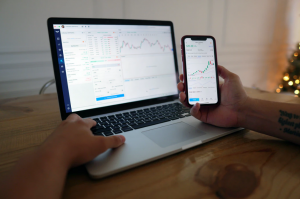The forex market represents a vast global entity and one that sees an estimated $6.6 trillion traded globally every single day. Interestingly, the forex market is also influenced by a deceptively wide range of geopolitical and socioeconomic factors, which may be of interest to business owners across the globe. But what’s the value of this, and what insights can entrepreneurs access by monitoring the foreign exchange?
The Base Interest Rate and Currency Values

International currencies are traded in pairs, the value of which is heavily influenced by each country’s respective base interest rate. This has been borne out during the coronavirus pandemic, where numerous nations sought to minimize their base rate as part of various quantitative easing measures. This instantly devalued currencies in the eyes of international investors, reducing capital inflows in the process.
As a result, the monetary policy of this type has a direct impact on real-time exchange rates in the foreign exchange, which is why investors use platforms such as the MT4 web trader to review economic calendar data and make viable forecasts for the future. Make no mistake; international business owners can also use this data to time their currency transactions effectively, especially when exchanging one large international holding with another. It is one of the steps to a profitable trading campaign.
Considering International Trade, Inflation and Capital Flows

Beyond interest rates, the balance of trade between nations is another key consideration for business owners. The reason for this is simple; respective forex trading serves as a proxy for the demand for goods from a particular country, while nations that benefit from particularly high levels of demand will see currency values appreciate. This can subsequently inform your business model and treatment of exports and imports alike, as you may choose to buy relevant materials in bulk in order to benefit from positive fluctuations in value.

On a similar note, money exchange rates can be impacted directly by monetary flows that arise as a result of interactions between countries. For example, in a scenario where a country’s imports exceed exports, their currency value will decline and cause business owners to react as a result.
Inflation is another key currency value metric and one that refers to a steady increase in the price of goods and services. Concerted periods of inflation tend to decrease the value of a respective currency over time while impacting the cost of living and the average consumer’s ability to purchase goods. This may encourage you to review your pricing and factor in increased inflation, while also prompting you to hold less in particular assets and fiat currencies.


































